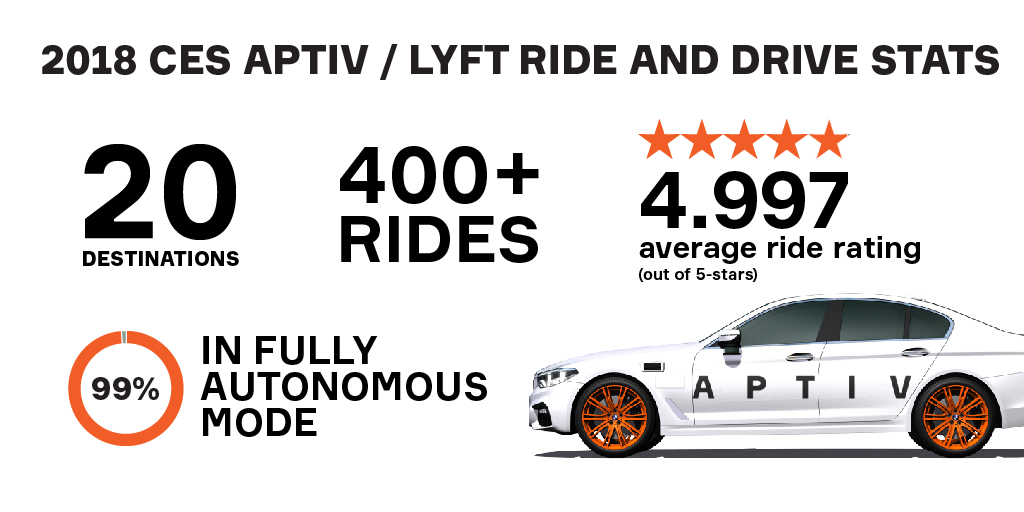If you are paying attention to the race toward autonomous driving, you may have trouble keeping track of all the entrants. Companies from all over the world – and with diverse backgrounds; some automotive, some tech, some big and some small have thrown their proverbial hats into the ring. It can be very confusing and at times difficult to tell who is making meaningful progress.
How is Aptiv Different?
Aptiv is a leader in this race for several reasons. The first and most important reason is our team. When you look at the combination of talent that we bring together from Ottomatika (spun out of CMU), nuTonomy (spun out of MIT), as well as Aptiv (with its proven track record of automotive systems innovation) it’s an amazing team that has truly remarkable capability – with roots going back to the DARPA challenges as well as decades of innovation with advanced safety technologies. Solving the automated driving challenge requires you have the very best and that is exactly what we have.
The second point I would make is that Aptiv is a world leader in automotive software. You would probably never guess that we ship 40 billion lines of code per day – growing to over 200 billion in the next few years. That’s a staggering number when you consider the Android operating device has 12 million lines of code and an F-35 fighter jet has 24 million lines of code.
The third point is that unlike many of the entrants in this automated driving space, Aptiv truly understands what it means to make hardware and software automotive grade. That means we know how to make sophisticated hardware – like computers and sensors – work in any environment, in any temperature, in any climate, in any conditions. Basically, it has to work all the time. You would probably never guess that we ship more computers than Dell and HP combined. A computer is a processor after all.
Granted, there are a few other companies that can boast making hardware and software. What they can’t say is that they also engineer, design and produce the electrical architecture system, which distributes and connects the massive amount of data required to enable all these complex system to work – safely and quickly – all the time.
My fourth point is that Aptiv understands the full vehicle architecture required to support deploying an automated vehicle. While some companies may have an array of sensors mounted on top of their cars and a trunk full of computers, our vehicles have fully integrated sensor systems and fully integrated electronics as well as data and power distribution. Here’s a unique concept: you can actually use the trunks of our automated vehicles to store your luggage!
Finally, there is no substitute for putting cars on the road and performing real-world testing. Aptiv is the only company to have tested its Level 4 automated driving platform in Asia, North America and Europe. We drive in day, night, rain, sun and in urban as well as suburban environments. This is not a PowerPoint, a video, or a parking lot demonstration... these are real-world drives with real customers that provide Aptiv with the feedback and cycles of learning required to advance our automated driving technology. We have over 70 vehicles operational today and will have more than 200 vehicles on the road by the end of this year. This is no science experiment, this is Aptiv preparing for commercial deployment of our automated driving platform in 2019.
What are people saying?
Navigant Research ranks the automotive companies on their self-driving programs. Since 2015, Navigant has scored the 20-or-so companies working on self-driving technology on 10 different criteria related to strategy, manufacturing and execution, then ranks the companies in four categories: leaders, contenders, challengers and followers.
Last year, only four companies (and partnerships) landed in the leader category: GM, Ford, Daimler, and Renault-Nissan, while Aptiv was listed as a strong contender. This year, Aptiv made a significant jump into the leader category, reflecting our continued commitment and the progress of our automated driving platform.
And consumers agree. We partnered with Lyft to bring self-driving rides consumers at CES 2018 in Las Vegas. The demand far exceeded the supply and people loved the ride.
During the show we:
- Provided point-to-point rides to more than 20 destinations
- Gave more than 400 rides to the general public during the five days of CES
- 99% of miles driven were completed in fully autonomous mode
- 4.997 average ride rating (out of 5-stars) across all days

The results and feedback have been so overwhelmingly positive that we have decided to continue our partnership with Lyft and will be extending the self-driving public pilot in Las Vegas. We are also in discussions to bring a pilot to a second market in the future.
I continue to be excited about the future of mobility that we at Aptiv are building. One leap at a time.
